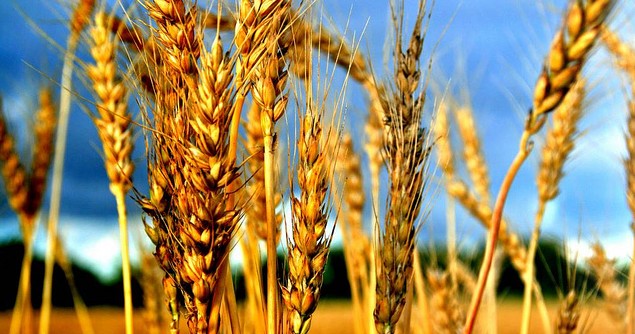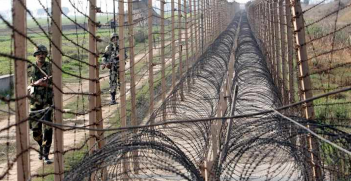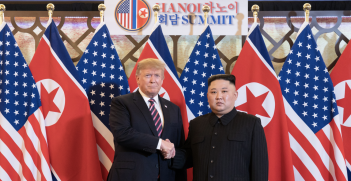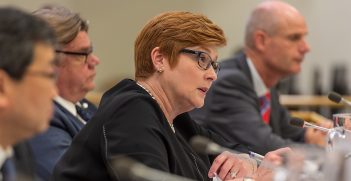Quelling Future Panic over Global Food Security

A valuable initiative of the G20, the formation of the Agricultural Market Information System is proving to be a calming, informed voice among growing concerns over food security, writes Abdolreza Abbassian.
A cautionary tale
It’s 6 August 2010, and an eye-catching headline screams from the front page of the Financial Times: “Wheat soars on Russian ban!” The worst drought in over 100 years meant the country was unable to harvest the bumper crop everyone (including major forecasters in Russia) had predicted. The consequence? A government-enforced ban on exports. In a new era of falling granaries and shrinking exportable supplies amongst leading agricultural producers, global reliance on Russian grains had grown substantially. Consequently, the presumed disruption in the orderly flow of grains from Russia sent shockwaves throughout the global food economy.
The ban wasn’t official yet but such was the “butterfly effect” on international commerce that a hoarding frenzy gripped markets immediately. Escalating protectionism amid fears of political instability and sparked by rising food inflation fuelled the panic. Rice-producing countries were the first to react by restricting their own exports. Naturally, rice quotations in world markets likewise soared, even though there was no clear evidence of any rice production shortfall.
Thus, merely two years after the 2008 “food crisis”, the world was confronted with yet another food price shock. This time around, the situation proved even more daunting – exorbitant price levels were accompanied with wide price swings, leading to a roller-coaster market environment that benefited only speculators.
Panic stations
These developments underscored a number of emerging problems in the global food system – first, a perceived lack of accurate information on such basic variables as production and stocks; and secondly, more fundamental questions concerning the absence of any effective platform where informed policy decisions could be taken without causing disruption to orderly trade.
In other words, what was needed was a formal mechanism that could thwart the “beggar-thy-neighbour” policies. Regarding the first set of problems, a number of intergovernmental food bodies – including the Food and Agriculture Organisation of the United Nations (FAO) and International Grains Council (IGC) – already provided the relevant information with short and medium-term forecasts for all main variables in the supply and demand balances of major food crops. They are, in fact, mandated by their members to do so. Similarly, timely information is provided by the United States Department of Agriculture (USDA). However, the sudden and unexpected upturn in international prices of cereals in 2010, largely sparked by the Russian drought and the ad hoc or arbitrary imposition of export restrictions, showed that even the best efforts of the existing organisations could do little to calm a market, which had lost self-confidence.
Just as wildfires swept across Russia, a massive flow of loose money, in the form of “financial investment” in agricultural derivatives tore through agricultural commodity markets. In search of alternative and more lucrative returns, this was a startling upshot of the Global Financial Crisis and the worsening macroeconomic climate. In fact, commodity markets in general enjoyed an astonishing “super-cycle boom” in the 2000s, supported in part by the deregulatory process in the United States: “Traders reap $250bn harvest from boom in commodities” trumpeted a cover story of the Financial Times (15 April 2013) – referring to the estimated combined earnings of only a handful of large trading houses since 2003. Not surprisingly, therefore, the whole food sector felt vulnerable, shaken by the colossal financial power of those firms and the undesirable influence they could wield over markets. Not since the early 1970s had global food security seemed so much at the mercy of so many uncontrollable events – a worrying sign of more problems ahead for many countries, especially the poorer ones that rely on international markets for their food. The near-absence of any governance structure capable of promoting policy dialogue and mitigating the impending panic was increasingly evident.
A crisis meeting
In an unprecedented move, within days of the first price spike in mid-August 2010 and under the auspices of its Intergovernmental Groups on Grains and Rice, FAO mobilised all its members to Rome for an extraordinary one-day meeting in September to discuss the troubled market conditions with a view to stimulate a coordinated response. Governments also dispatched 90 of their top market experts and high-level officials to the FAO meeting. But in spite of very engaging discussions, the event failed to yield any immediate results and no consensus could be reached. Ironically, this was a meeting taking place less than a year after the November 2009 World Food Summit in Rome, when world leaders reaffirmed their commitments “to take urgent action to eradicate hunger from the world”.
In the following two months, as food market conditions continued to deteriorate, the G20 Seoul Summit (under the Food Security pillar of the Seoul Multi-year Action Plan on Development) asked a number of international institutions to identify the best ways to manage and mitigate risks of food price volatility without distorting markets. This culminated in an initial paper and was followed by a more detailed report,which set in motion the creation of the Agricultural Market Information System (AMIS), which was launched September 2011.
A system of checks and balances
AMIS is a system that is put in place to deal with a number of agricultural commodities markets (wheat, rice, maize and soybeans) of key importance for the world food economy. The fact that the founder of AMIS is the G20, and that G20 nations hold a predominant share in world production, consumption, stocks and trade for those crops, gives AMIS especially important status. In addition, and to further enhance its global position, the G20 invited seven non-G20 countries, selected on the basis of their contributions to world production, consumption and trade of the targeted crops.
Another feature of AMIS is its rather unique structure: housed within FAO, its Secretariat is made up by ten international organisations. One responsibility of the Secretariat is to evaluate world market conditions based on the most accurate and timely information it can find and to keep all market drivers under close scrutiny at all times. AMIS consists of two well-established and distinguishable groups, each composed of representatives from participating countries. One group (the Global Food Market Information Group) brings together government technical officers who work closely with the Secretariat – these experts are required to provide timely and accurate market information. The second group (the Rapid Response Forum) is composed of senior officials from the participating countries, who are in a position to take policy initiatives should market conditions require coordinated actions.
A credit to the G20’s charter
The building of AMIS in such a relatively short period of time is an accomplishment in itself, and merit must go to the G20 for its unremitting commitment. Likewise, the driving international organisations also played a critical role – first in launching the idea and, later, in the AMIS implementation. Even more importantly, it was an example of the collaborative spirit of the G20 to work together as one team towards a set of common objectives. That all said, enormous challenges still lie ahead. Political commitments at the highest levels must continue in order to strengthen the AMIS set-up and allow it to become a leading platform for accurate market information and a legitimate authority for policy consultation and dialogue at times of distress like in 2010.
A voice of calm
In 2012, another major drought slashed the US maize crop, and reignited international debates over food versus fuel and the inadequacy of global food supplies to meet growing demand. Again, some exporting countries started to toy with the idea of imposing export restrictions as a way to protect their own consumers. At a first glance, it brought a sense of déjà vu. Yet, this time, the situation was very different. The newly established AMIS provided a solid platform for early consultations between its key members and managed to sway the attention to a more positive market outlook than most had predicted. Undoubtedly, it helped preempt any unnecessary policy decisions that could have made the situation worse. Thus, AMIS was instrumental in helping the market return to normal conditions.
Yes, international food prices remained high, and in some cases rose even further in the subsequent months up until 2013. However, as is widely recognised, when markets are transparent and market players can work on a level playing field, the best cure for high prices is high prices. Contrary to the past, the most recent episodes of price hikes have not generated panic and today’s relative tranquility can, to some extent, be credited to a better functioning of global food markets.
Such is the outcome of a short journey from the 2010 wildfires in Russia to the 2012 drought in the US and beyond.
Abdolreza Abbassian is AMIS Secretary, Food and Agriculture Organisation of the United Nations.
This is an extract from G20: Words into Action Brisbane 2014, to be published by Faircount Media in association with the Australian Institute of International Affairs in October 2014.





